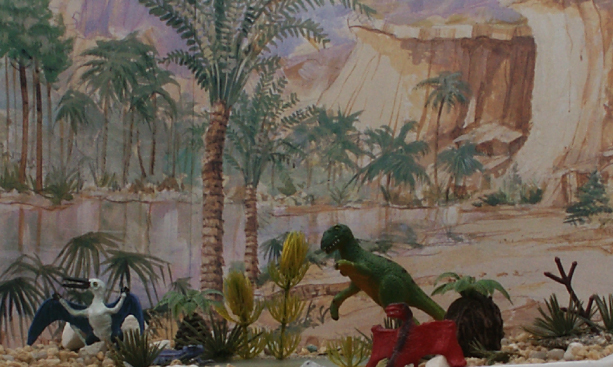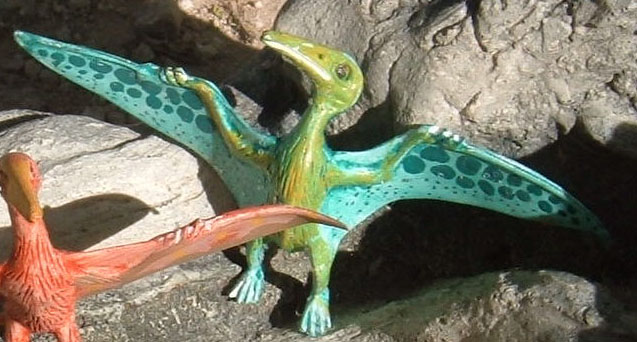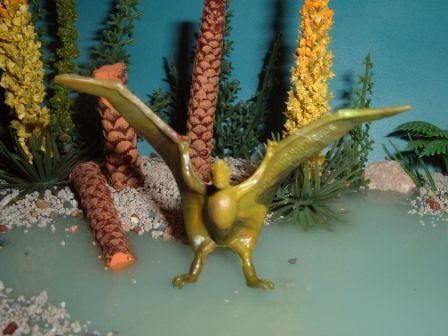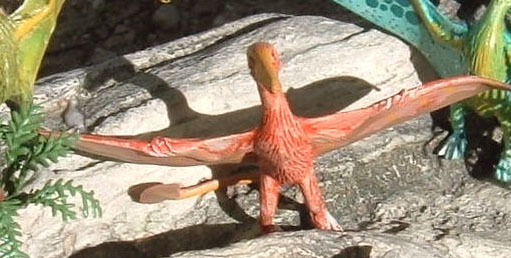The Sky's of the Mesozoic
Pterosaurs can be divided into two groups the Rhamphorrhynchoidea and Pterodactyloidea. The tailed Rhamphorynchoids flourished until the Late Jurassic and start to decline as birds appear in the fossil record.
Updated 122912

Dimorphodon ("two-form tooth") had a 4 feet long wingspan and lived in the Early Jurassic. It used a toothy puffin shaped bill to hunt fish. Late Jurassic Solnhofen, was an archipelago at the edge of the Tethys Sea. This included placid lagoons that had limited access to the open sea and where salinity rose high enough that the resulting brine could not support life. Since the lowest water was devoid of oxygen, many ordinary scavengers were absent. A few small dinosaurs and twenty-nine kinds of pterosaur have been found. Compsognathus was small dinosaur, is believed by many scientists to be an early relative of Archaeopteryx, the first known bird.
Rhamphorhynchus was a primitive type of flying reptile with wings up to 1 meter long. These were made of skin stretched between an elongated finger from its hand, down to its ankle. It had a long straight tail which ended in a diamond-shaped rudder.
| Pterodactylus was typical of Solnhofen an agile flyer built to feed on fish or insects. This Pterodactyloidea sported a short tail compared to Rhamphorhynchus. | Rhamphorhynchus could have hunted by dragging its beak in the water . When it came into contact with prey, it would snap its needle-sharp teeth shut, and toss the food into it's throat pouch, a structure that has actually been preserved in some rare fossils. |
 |
 |

Rhamphinion was another long tailed flyer from the Early Jurassic of the Kayenta formation in Arizona.
